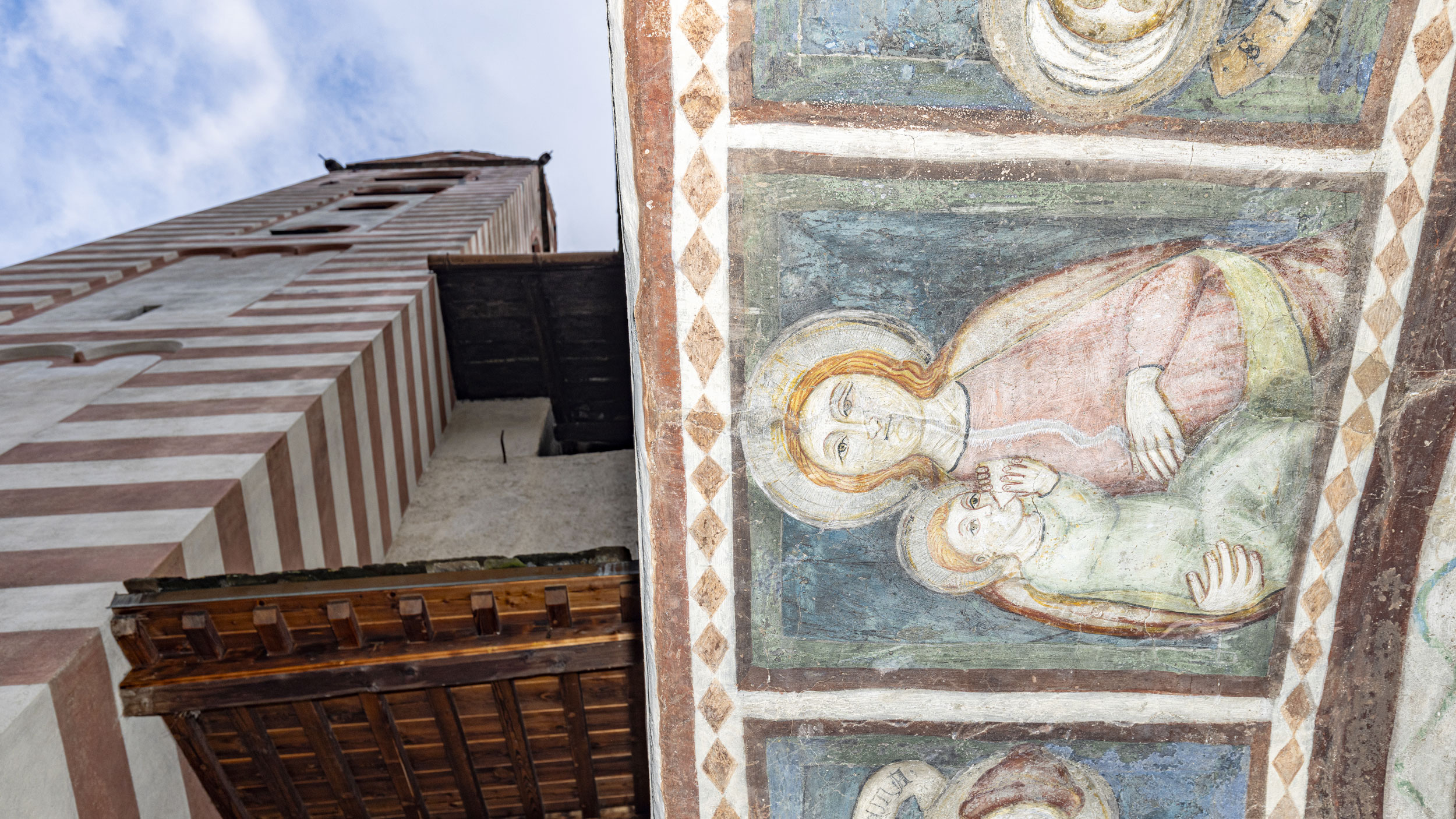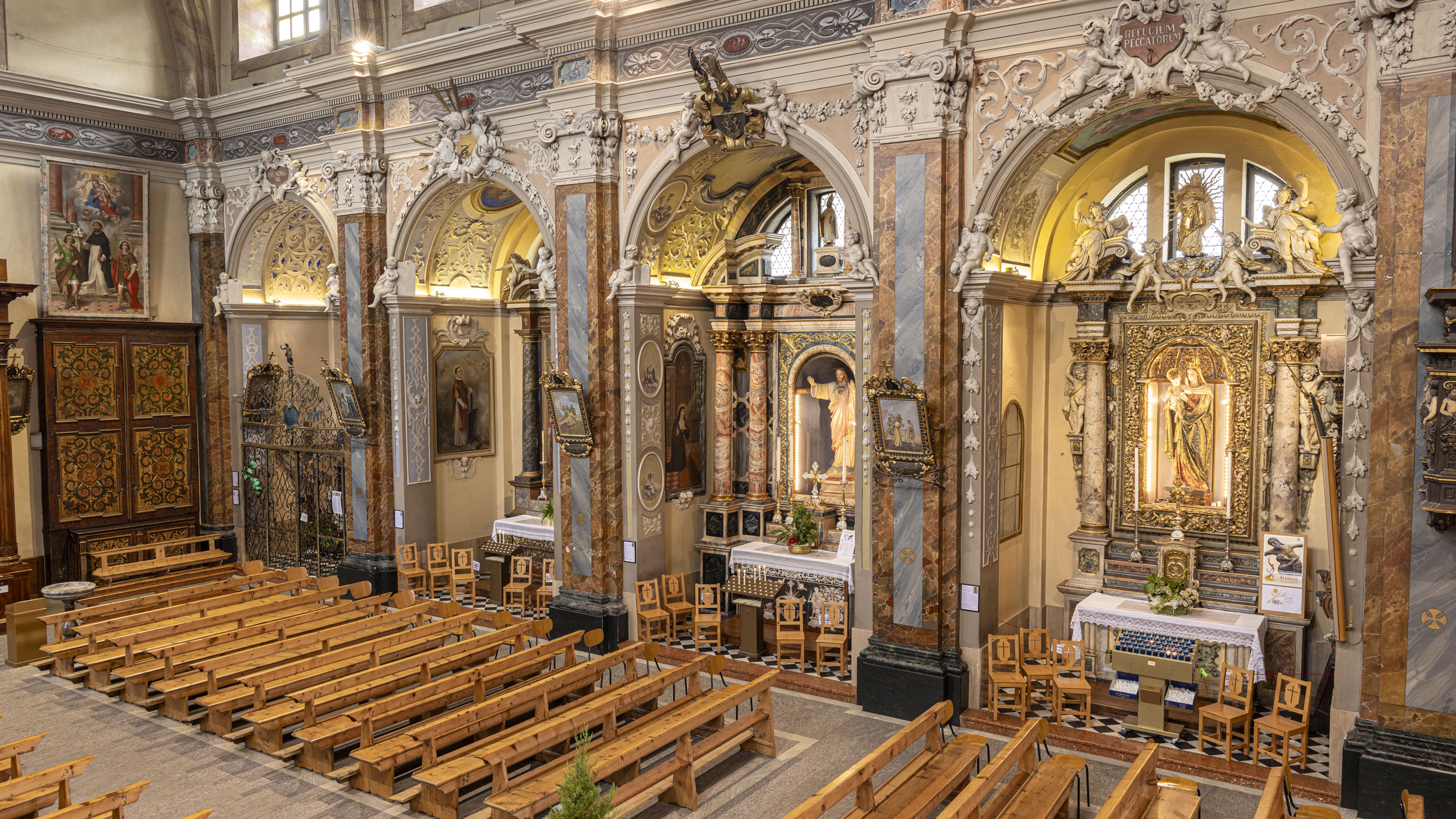Piazza Cavour, 18, 23032 Bormio SO
Seventy-two kilometers of verdant trails from Bormio to the Madonna di Tirano sanctuary.
The eastern section of the Cammino Mariano delle Alpi begins in the heart of Bormio, at the foot of Monte Réit and the Torre Civica, whose clock proudly displays the city’s emblem, a white cross on a red background.
Piazza del Kuèrc takes its name from the characteristic covered structure once used for public assemblies and sentencing the guilty. Ringed by historic buildings, the sloping, irregularly shaped piazza is one of Valtellina’s most iconic.
Originally built in the early medieval period, the collegiate church of Saints Gervasius and Protasius stands on a lofty perch, mother of all the churches in the parish of Bormio, encompassing Valfurva, Valdidentro, Valdisotto, and also the valley of Livigno. Virtually nothing remains of the original building with annexed baptistry, which was probably transformed after the year 1000 into a large church with a nave and two aisles that was irreparably damaged by a fire in 1621. Reconstruction was entrusted to Gaspare Aprile of Ticino, a builder very much in demand in Valtellina for his churches in Counter-Reformation style. The ashes of the former church gave birth to a typical baroque church with a single nave, side chapels, and a deep presbytery, built using the preexisting outer walls, which had not been compromised by the flames.
Other surviving elements of the earlier church include the bricked-up doorways revealed during restoration work, one with a lunette containing one of the oldest Marian images in the complex: a Virgin and Child with Saints Gervasius and Protasius dating to the late 14th century. Another medieval relic surviving the ravages of time is the suggestive vaulted passageway connecting the church to the parsonage frescoed with a Christ in Mandorla complemented by an Annunciation and a tender Nursing Madonna (1393).
The side chapels in the church are an expression of the protagonism of families and confraternities and offer a sampling of local cults and baroque altars.
Beneath the organ there is a wooden statuary group of the Lamentation of Dead Christ (1647), work of the local wood carver Giovan Pietro Rocca.
The collegiate church of Bormio, like many other churches in Valtellina and Valchiavenna, also had its “Vested Madonna”. The wooden statue once stood on the altar of the Rosary but later fell out of favor. Recently restored, it is kept above the “Sala colonne” adjacent to the church together with many other disused furnishings and objects, precious testaments to the history of Bormio and its churches.








